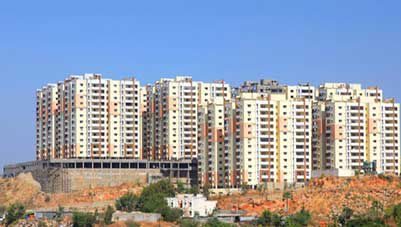The Gross Domestic Product (GDP) of a country is a critical indicator of its economic health and global standing. It measures the total monetary value of all goods and services produced within a nation’s borders over a specific period. GDP not only reflects a country’s economic strength but also provides insights into its citizens' standard of living, infrastructure, and overall development.
India, one of the fastest-growing economies, continues to make significant strides in the global GDP rankings. With robust economic reforms, a youthful workforce, and increasing digitalisation, India is poised to close the gap with the world’s largest economies by 2025. This article delves into the top GDP countries in 2025, India’s GDP per capita, growth trends, and the implications of economic growth for its citizens.
Top 10 GDP countries 2025
The global economic landscape is evolving rapidly, with emerging economies like India and China challenging the dominance of traditional powerhouses such as the United States and Germany. Below is a comparative table showcasing the projected GDP, per capita GDP, growth rates, and global GDP share of the top 10 economies in 2025:
| Country | Nominal GDP (USD Trillion) | GDP Per Capita (USD) | Growth Rate (%) | Global GDP Share (%) |
|---|---|---|---|---|
| United States | 26.7 | 79,000 | 2.0 | 23.5 |
| China | 22.1 | 15,300 | 4.5 | 19.5 |
| Japan | 5.3 | 42,000 | 1.5 | 4.6 |
| Germany | 4.9 | 58,000 | 1.8 | 4.3 |
| India | 4.8 | 3,400 | 6.5 | 4.2 |
| United Kingdom | 4.0 | 59,000 | 2.0 | 3.5 |
| France | 3.8 | 56,000 | 1.7 | 3.3 |
| Brazil | 2.5 | 11,800 | 3.0 | 2.2 |
| Italy | 2.3 | 40,000 | 1.6 | 2.0 |
| Canada | 2.2 | 58,500 | 1.9 | 1.9 |
India’s remarkable growth rate of 6.5% stands out, making it one of the fastest-growing economies globally. This growth trajectory is driven by strong domestic consumption, government-led infrastructure initiatives, and a thriving services sector.
India GDP per capita 2025: Where do we stand?
While India’s nominal GDP places it among the top five economies globally, its GDP per capita remains comparatively lower. GDP per capita is a crucial metric that divides a country’s GDP by its population, offering insights into the average income and standard of living.
Here is a comparative table of GDP per capita for India and its neighbouring countries in 2025:
| Country | GDP Per Capita (USD) |
|---|---|
| China | 15,300 |
| Sri Lanka | 4,500 |
| India | 3,400 |
| Bangladesh | 3,000 |
| Pakistan | 1,800 |
India’s GDP per capita is expected to grow steadily, but challenges such as income inequality, population size, and access to quality education need to be addressed to accelerate this growth. However, initiatives like the Digital India campaign and increased foreign investments are paving the way for a brighter future.
India’s GDP growth rate – Last 10 years (2015–2025)
India’s GDP growth over the last decade has been a story of resilience and recovery. The country has weathered global economic slowdowns, the COVID-19 pandemic, and other challenges to emerge as a key player on the global stage.
Key milestones in India’s GDP growth:
- 2015–2019: India witnessed robust growth, averaging around 7% annually, driven by reforms like GST implementation and the Make in India initiative.
- 2020: The pandemic caused a contraction of -7.3%, marking a challenging period for the economy.
- 2021–2022: A V-shaped recovery saw GDP growth rebound to 8.7%, supported by government stimulus and vaccination drives.
- 2023–2025: India is projected to maintain a growth rate of 6–7%, bolstered by infrastructure investments and a booming services sector.
GDP: What it means and how it’s measured
GDP represents the total value of all goods and services produced within a country. It is a comprehensive metric used to gauge economic performance.
Types of GDP:
- Nominal GDP: Measures the economy’s output using current market prices.
- PPP (Purchasing Power Parity) GDP: Adjusts for price differences across countries, offering a more accurate comparison of purchasing power.
How GDP is calculated:
GDP = C + I + G + (X - M)
Where:
- C = Consumer Spending
- I = Business Investments
- G = Government Spending
- X = Exports
- M = Imports
For example, if India produces Rs. 1,00,000 worth of goods and services, and its imports and exports balance out, its GDP will reflect this total value.
PPP vs. nominal GDP: What’s the difference?
While nominal GDP measures the economy’s size in absolute terms, PPP GDP accounts for cost-of-living differences, providing a more accurate picture of a country’s economic strength.
Top 5 GDP countries by PPP in 2025:
| Country | PPP GDP (USD Trillion) |
|---|---|
| China | 36.0 |
| United States | 26.7 |
| India | 15.0 |
| Japan | 6.5 |
| Germany | 5.5 |
India’s ranking improves significantly under PPP metrics, highlighting its growing purchasing power and domestic market potential.
Future outlook: Can India become a top 3 economy?
India’s potential to become a top 3 global economy is supported by several factors:
- Demographics: A young and dynamic workforce.
- Digitalisation: Rapid adoption of technology across sectors.
- Reforms: Policies like PLI (Production Linked Incentive) schemes and infrastructure development.
According to the IMF, India could surpass Germany and Japan in nominal GDP by the early 2030s, provided it sustains its current growth trajectory.
How a growing economy impacts you (Indian citizens)
India’s economic growth directly benefits its citizens in several ways:
- Job Creation: Expanding sectors like IT, manufacturing, and infrastructure generate employment opportunities.
- Higher Income: Increased GDP per capita translates to better earning potential.
- Improved Infrastructure: Investments in roads, railways, and urban development enhance quality of life.
- Access to Digital Services: Initiatives like Digital India make government services more accessible.
This growth also makes homeownership more attainable. With rising incomes and affordable financing options like the Bajaj Finserv Home Loan, you can now plan your dream home with ease.
Conclusion
India’s economic growth is a testament to its resilience and potential. As the country climbs the global GDP rankings, its citizens stand to benefit from improved opportunities and living standards. Whether it is job creation or affordable housing, the growth story is a promising one.
If you are planning to capitalise on this economic growth by investing in a home, consider the Bajaj Finserv Home Loan. With competitive interest rates starting at 7.35%* p.a., flexible tenures of up to 32 years, and a seamless online application process, your dream home is just a few clicks away. Check your eligibility today and take the first step toward homeownership!













